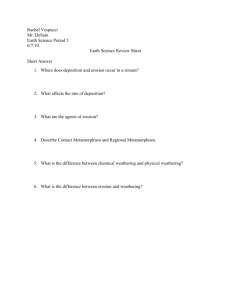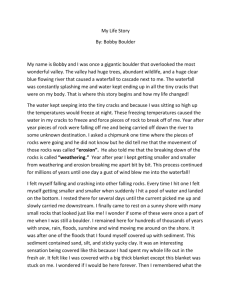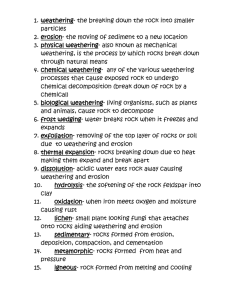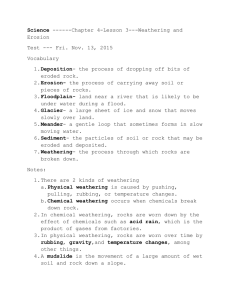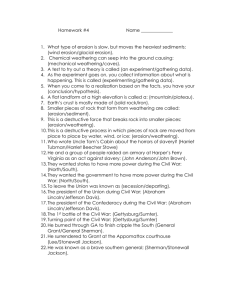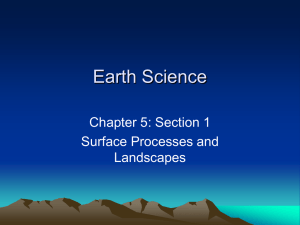File
advertisement
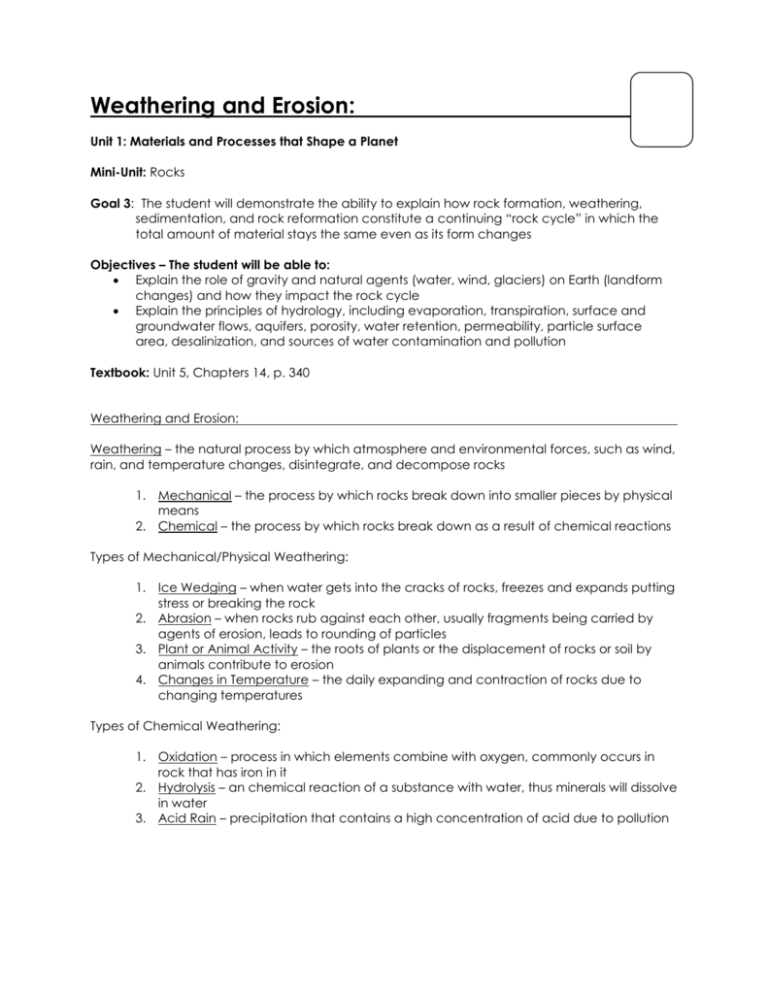
Weathering and Erosion: Unit 1: Materials and Processes that Shape a Planet Mini-Unit: Rocks Goal 3: The student will demonstrate the ability to explain how rock formation, weathering, sedimentation, and rock reformation constitute a continuing “rock cycle” in which the total amount of material stays the same even as its form changes Objectives – The student will be able to: Explain the role of gravity and natural agents (water, wind, glaciers) on Earth (landform changes) and how they impact the rock cycle Explain the principles of hydrology, including evaporation, transpiration, surface and groundwater flows, aquifers, porosity, water retention, permeability, particle surface area, desalinization, and sources of water contamination and pollution Textbook: Unit 5, Chapters 14, p. 340 Weathering and Erosion: Weathering – the natural process by which atmosphere and environmental forces, such as wind, rain, and temperature changes, disintegrate, and decompose rocks 1. Mechanical – the process by which rocks break down into smaller pieces by physical means 2. Chemical – the process by which rocks break down as a result of chemical reactions Types of Mechanical/Physical Weathering: 1. Ice Wedging – when water gets into the cracks of rocks, freezes and expands putting stress or breaking the rock 2. Abrasion – when rocks rub against each other, usually fragments being carried by agents of erosion, leads to rounding of particles 3. Plant or Animal Activity – the roots of plants or the displacement of rocks or soil by animals contribute to erosion 4. Changes in Temperature – the daily expanding and contraction of rocks due to changing temperatures Types of Chemical Weathering: 1. Oxidation – process in which elements combine with oxygen, commonly occurs in rock that has iron in it 2. Hydrolysis – an chemical reaction of a substance with water, thus minerals will dissolve in water 3. Acid Rain – precipitation that contains a high concentration of acid due to pollution Factors that Affect the Rates of Weathering: a. b. c. d. Rock Composition – density and composition changes the rate of erosion Surface Area – the more surface area exposed, the faster the weathering Fractures and Joints – naturally forming cracks make the rocks weaker Climate – alternating hot and cold weather allows for faster weathering, as well as hot and humid e. Topography – steep slopes allow for faster erosion Sediment – fragments or particles of rock produced by weathering, named according to size Particle Size <.0004 cm .0004-.006 cm .006-.2 cm .02-6.4 cm Name Clay Silt Sand Pebbles Deposition – process by which transported sediment is dropped in new places by agents of erosion Horizontal Sorting/Deposition – particles carried by a stream or wind begin to be deposited as velocity decreases, thus larger particles are deposited first and smaller particles are carried further Vertical Sorting/Deposition – larger or more dense particles will settle first, smaller or less dense particles take a little longer


